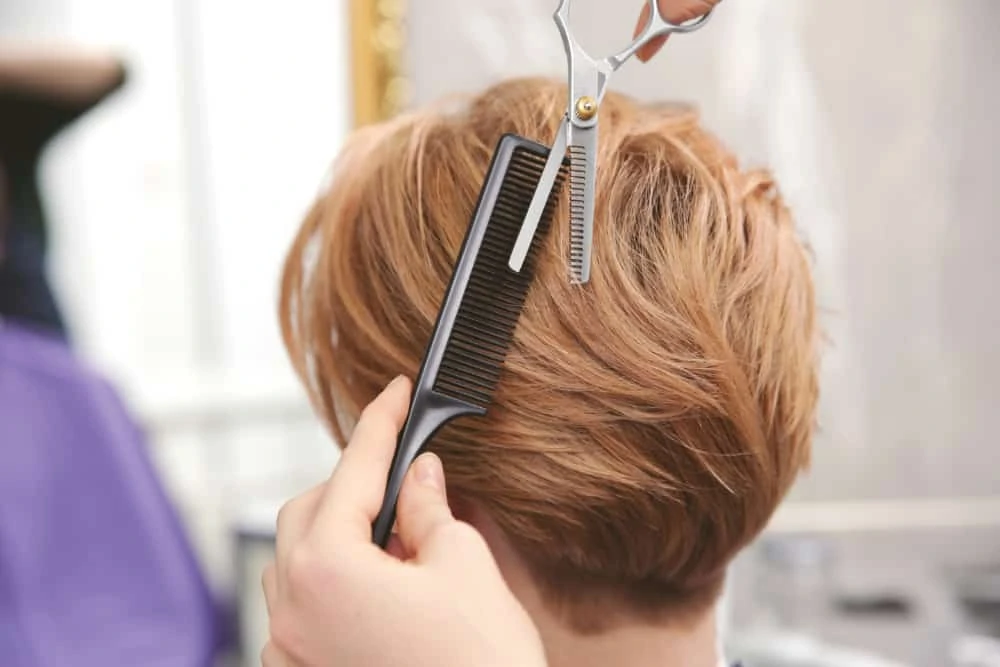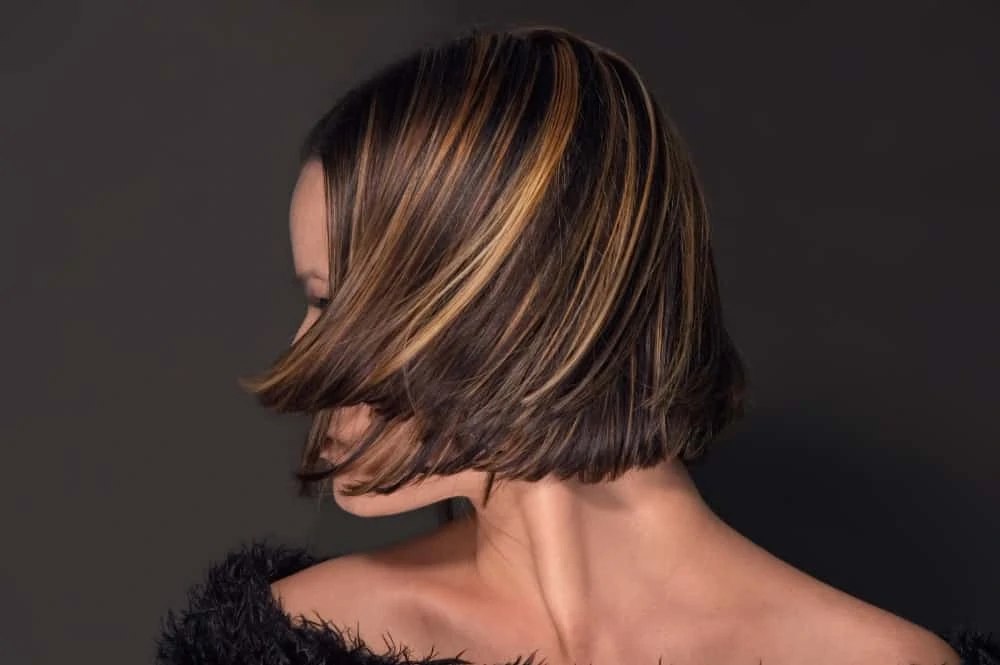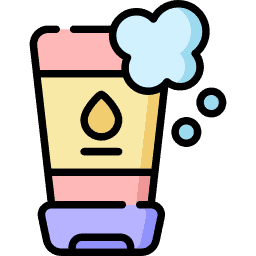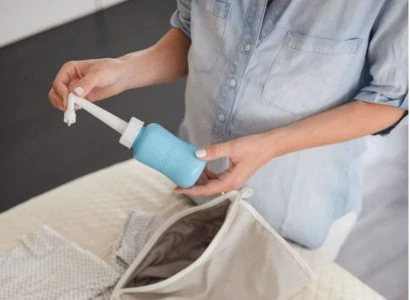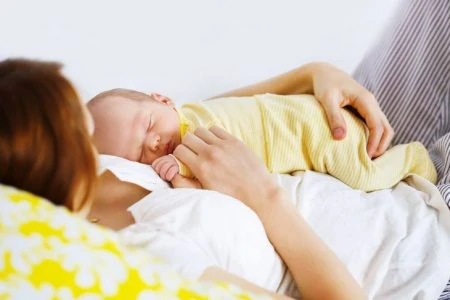Have you noticed some disturbing changes in your hair since you had your baby?
You’ve done all the work and lent your body for nine months to bring another person into this world. But, come on! Why do pregnancy and post-pregnancy issues have to suck so much?
It’s ok to feel upset about losing so much hair, even though you’re grateful for your healthy baby. You may be a mom now, but you’re still a woman.
Understanding why this is happening may help you realize it’s normal and it’s not your fault. Also, when you start to feel bad about it, remember it’s not permanent.
In this article, we’ll discuss the causes of postpartum hair loss, and what you can do about it in both the short and long term.
- Do I Have Postpartum Hair Loss?
- What Causes Postpartum Hair Loss?
- Can I Prevent Postpartum Hair Loss?
- How Bad Does It Get?
- When Will Postpartum Hair Loss Stop?
- When to Worry About Postpartum Hair Loss?
- Tips for Postpartum Hair Loss
- Long-Term Solutions for Postpartum Hair Loss
- Postpartum Hair Loss FAQs
- Making the Most Out of a Hairy Situation
Do I Have Postpartum Hair Loss?
Normally, a person loses about 100 hairs a day (1). But ladies with postpartum hair loss will notice much more than that. You’ll seem to be shedding more than ever, especially compared to during pregnancy when you barely noticed any hair falling out.
You’ll notice the extra hairs on your hairbrush, or you may even see some smaller clumps falling out. I realized I had this issue in the first three months or so of having my baby. I noticed my hair seemed to be thinner than usual and saw my hairbrush filling up way more than in the past.
I didn’t understand why it was happening, and I felt like there was something wrong with me. It wasn’t easy to deal with, but I did take some comfort in knowing I wasn’t alone once I did some quick research online about the problem.
So if you see this happening, don’t freak out. It’s normal and common. Up to half of all women will lose more hair than usual in the first five months after having their baby.
The good thing is there are ways to disguise your hair loss until your body begins to recuperate from all it’s been through. When I was dealing with this, I learned some great tricks to fake a full mane that I’ll share with you in a later section.

What Causes Postpartum Hair Loss?
Without being so technical you start to yawn — after all, you are a sleep-deprived mom — this issue can all be traced back to hormones. In particular, our old friend estrogen is to blame.
When you’re pregnant, your estrogen levels increase and that is good news for your hair. Your hair essentially has three phases — growth, resting and falling out. Usually, 90 percent of your locks are in the growth phase, and during pregnancy, that percentage holds steady.
Many of the hairs in the resting phase remain in place instead of falling out, however. “You’re basically keeping your resting hair and growing new hair from the previous resting phase,” Danielle Marzella Grillo, hair loss expert explains. That translates into lusher hair for you. But once that baby is delivered, your estrogen levels decrease and your hair starts to fall out.
Can I Prevent Postpartum Hair Loss?
Unfortunately, you can’t prevent it, but there are methods you can employ to mitigate the losses. Although every method may not work for you, there are some things your doctor or dermatologist may recommend trying, both to jumpstart the growth of new hair and disguise your hair loss:
- Taking iron supplements.
- Starting a course of vitamins which help with hair growth.
- Boosting your immune system and overall health with a good diet, exercise, and as much sleep as a busy mom can get.
- Keeping your stress levels in check.
- Switching to a shampoo that has growth factor peptides in it.
- Using a volumizing shampoo.
- Keeping your scalp healthy with antifungal shampoos.
How Bad Does It Get?
It can vary from woman to woman, and it also depends on how full your hair was, to begin with. Women who had a thick mane before pregnancy may be the only ones to notice their hair loss because they’ll still have a lot of hair. If your hair was on the thin side before pregnancy, the loss will be more noticeable, but you certainly won’t attract stares when you’re out in public.
Keep in mind, we’re often our own worst critics and we tend to notice things we don’t like about ourselves way more than anyone else notices them.
Think about when you get an inch or two cut off the ends of your hair and you feel like it’s a radical change. Then you go out and no one, not even your partner, notices it. Your hair loss may be exactly like that — something you notice way more than anyone else does.
When Will Postpartum Hair Loss Stop?
The good news is it’s typically over by the time your baby reaches 6 months of age, although some women have reported their thinning hair lasted until their baby’s first birthday. So, while it isn’t fun while it’s happening, it is relatively short-lived.
And, remember, there are ways to deal with it or make it less noticeable so don’t let it diminish the joy you’ll get from being a mom. Although I felt pretty self-conscious about my hair loss following the birth of my baby, I tried to keep it in perspective — that there were worse things that could be happening to me. In the meantime, I did everything I could to make my hair look fuller so I didn’t feel as bad about it.
It’s not like I woke up one day, stared at my head in the mirror, and noticed miraculous growth. But I did notice less hair in my hairbrush and fewer hairs falling out. Then, months later, I noticed I wasn’t having to do as many tricks to fake a full head of hair — I actually had it again!
When to Worry About Postpartum Hair Loss?
If your hair loss continues past the one-year mark and you have other symptoms, it’s time to consider there may be an underlying cause.
You might be suffering from postpartum thyroiditis, which means inflammation of the thyroid, the butterfly-shaped gland in the front of your neck. This condition happens to 5 to 10 percent of postpartum women.
This thyroiditis will sometimes start with high levels of thyroid hormone in the blood before morphing into levels that are too low. Not every woman will experience both types though.
If you have high levels of thyroid hormone, which will usually happen one to four months after you have your baby, you may have:
- Anxiety.
- Palpitations.
- Insomnia.
- Fatigue.
- Irritability.
- Loss of weight.
If you have low levels of thyroid hormone, it will usually manifest between four to eight months after you have your baby. Symptoms for that will include:
- Gaining weight.
- Constipation.
- Dry skin.
- Feeling depressed.
- Feeling overly tired.
- Decreased ability to handle exercise.
The reason so many moms don’t notice their thyroid issue is because many of the symptoms are common for normal new moms. They may think their fatigue is caused by the midnight feedings, and anxiety and irritability can happen to new moms too.
If it is determined you’re suffering from thyroiditis, your doctor may decide to put you on medication.
Tips for Postpartum Hair Loss
Here are 10 tips to see you through the worst of your postpartum hair loss.
1. Don’t Panic
This is one of the most important things to remember. It can be scary to see your hair coming out — I get it. But it helps if you remember it’s only temporary.
Now that you’ve made it this far into this article, you realize there’s no reason for panic. What you’re experiencing is normal for many women.
2. New Haircut
If you’re facing hair loss, now might be the time to get a fabulous new haircut. If you’re ready to take the plunge, consider getting a shorter haircut. Because your hair will be shorter and won’t be as weighted down, it can create the illusion of volume.
There is a side benefit to sporting a shorter haircut. It will cut down on the risk of a hair tourniquet. A hair tourniquet is when a strand of your hair gets wrapped around your baby’s fingers, toes, or even genitals.
Hair tourniquets can cut off the circulation of that body part and can cause issues with the skin tissue, nerves, and even function (2).
If you aren’t ready to part with your long locks, you could try having your hairdresser add in some longer or shorter layers to your existing haircut. That’s what I did when I noticed my hair thinning in the months after I had my baby. It made my hair look much fuller, especially when I used my favorite volumizer with it.
3. Styling
In addition to layering, there are other avenues to discuss with your hairdresser. You can add highlights and lowlights to add depth to your hair. If you don’t mind shelling out some money, you can get hair extensions which will make your hair look fuller.
When styling your hair, try some tricks to create volume. My favorite trick is blow drying my hair upside down — I sit down, lean over and then blow dry my hair. Then I put my hair up in a butterfly clip to let it finish air drying while I put on my makeup.
When I take the clip out, I have way more volume than I started with. I jokingly call it my magic trick. You should experiment with your hair, trying different hair parts like a zig-zag part to see what works best for you. And, a word of warning, if you decide to color your hair with highlights or lowlights, stick with a professional. Consider trying an ombre style to keep your roots healthy.
Another idea for instant volume, especially if your hair is prone to waves anyway, is giving yourself some extra body by using a deep wave curler. If you do huge sections at once, you’ll look like you walked straight out of the 1980s with a crimper though, so be careful. Do super small sections at a time to avoid that look.
4. Low Manipulation
Try to keep a hands-off approach whenever you can. The less you fuss with your hair, the less it will fall out or break. Sometimes the best thing you can do is do as little as possible.
Brush it as little as you can, don’t braid it or pull it back tightly, and try to avoid wrapping it tightly in a towel to dry. If you like to run and hate the feeling of your hair getting in your face, consider using a headband instead of a ponytail.
You should also use as little heat as possible.
5. Try New Products
Experiment with products you wouldn’t ordinarily use. There are a ton of great volumizing products out there, from shampoos with silica or biotin to styling products with thickening lotions.
You can also hop on the DIY bandwagon by making your own hair mask to boost your volume.
Greatest tip my stylist ever gave me — If you have color-treated hair, avoid products that have sulfates in them. They can cause your color to fade prematurely, and you don’t want that!
Editor's Note:
Mary Sweeney, BSN, RN, CEN6. Scalp Massage
Scalp massage, whether done professionally or by your partner or yourself, is a way to boost the blood flow to the scalp. It will help with your stress load, but may also help with the growth of your hair follicles.
If your goal is thicker hair, it may be best to go with a professional scalp massage (3). The side benefit is that it is more relaxing going with a professional than doing it yourself.
If your partner is game to give you a massage, you’ll save money, which is a good thing for new parents.
7. Use a Little Alcohol
The alcohol might not be the kind you want. It’s the kind you put on your head instead of ingesting. Products that contain alcohol aren’t always kind to your hair, but they can help disguise hair loss.
8. Accessorize
While you’re waiting for your hair to grow back in, you might as well have some fun with your style. You can use headbands, bandanas, hats, and headscarves to detract the attention from your thinning hair. And opt for scrunchies instead of elastic bands to be gentler on hair.
9. Hide Balding Spots If Necessary
If you have spots you need to hide where the hair loss is more concentrated, you can try tinted hair powders and fiber-based thinning hair concealers. These products have come a long way in the past few years, so they are worth a try if your hair loss is more severe.
10. Give It Time
Postpartum hair loss is reversible, but it will likely take a while to resolve. Even though it’s hard, you have no choice but to be patient. In the meantime, you can try the quick-fix disguising techniques we mentioned in this section.
While you’re waiting for your hair to fill back in, concentrate on how amazing your body was to bring another life into this world. It can be easy to fixate on the bad things in your life, but sometimes the antidote for that is to focus on what’s right with your world instead.
Long-Term Solutions for Postpartum Hair Loss
While the quick fixes above will make you feel better about your hair loss by disguising it a bit, these next set of steps will help you address the problem. While you can’t do much about your levels of estrogen dropping off, there are a few things you can do to live healthily to hopefully get your body ready to grow new hair.
1. Continue Prenatal Supplements
Don’t toss those prenatal vitamins just because you’ve delivered your baby. Having a baby took a lot out of you, and you can keep replenishing that as you take those vitamins.
They will help you get all the nutrients you need that you might not be getting through your diet. That will help your body continue to work in tiptop condition. Continue taking the supplements for as long as your doctor says you should.
2. Eat a Balanced Diet, Concentrating on Protein and Vitamins
Diet can be a great influencing factor on how quickly your hair grows. To maximize your growth, incorporate these foods into your diet (4):
- Spinach.
- Berries.
- Sweet potatoes.
- Avocados.
- Seeds.
- Nuts.
- Sweet peppers.
- Beans.
- Soybeans.
Eating right will have other benefits than stimulating hair growth. It will help your overall health and increase your energy too. If you avoid eating sugar as much as you can while focusing on these healthy foods, you’ll also avoid those intense energy crashes that happen as the sugar wears off.
3. Reduce Stress and Make Time to Relax
Being a mom is stressful, especially if this is your first baby. You go from having all your spare time being just for you to juggling work and parenthood. Free time and a good night’s sleep often is a thing of the past.
Even though you’re deeply in love with your baby, it’s stressful for both your body and mind. Try to get your partner on board with giving you a little bit of relaxation time, even if it’s just 30 minutes so you can enjoy a long hot bath. Or ask them to give you one of those scalp massages we mentioned earlier!
Postpartum Hair Loss FAQs
Making the Most Out of a Hairy Situation
There’s no doubt about it — postpartum hair loss can be a tough pill to swallow. It can shake your confidence and make you self-conscious at a time when you’re already undergoing so many changes.
But try not to let it get you down too much. Sometimes the best attitude to adopt during times of adversity is gratitude, even when it’s hard to do. There are worse conditions you could be dealing with, and I tried to keep that in mind when I faced this problem.
Luckily, until your body corrects itself, there are ways to disguise the severity of your hair loss. Use the tips mentioned above, particularly finding a good volumizer, blow-drying your hair upside down, and freshening up your layers or going with a shorter style.

